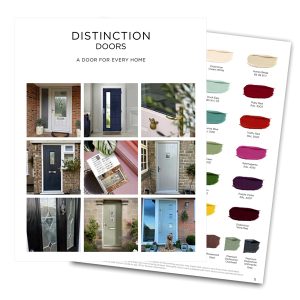What Causes uPVC Doors to Crack?
uPVC doors offer affordability and energy efficiency, but they may develop cracks due to several factors. Understanding these issues helps homeowners decide whether to repair or replace their doors. For a more durable and stylish solution, many choose replacement composite doors, which provide superior resilience and aesthetics.
Temperature Extremes
Fluctuating temperatures significantly impact uPVC doors.
Heat Expansion
High temperatures cause uPVC to expand. This constant movement weakens the material, making cracks more likely over time.
Cold Contraction
Cold weather causes uPVC to contract, increasing brittleness. Repeated cycles of expansion and contraction lead to material failure and visible cracks.
Impact Damage
Physical damage often causes cracks in uPVC doors.
Accidental Impacts
Strong impacts from heavy objects, tools, or collisions can damage the door, especially if it has already weakened due to age or weathering.
Door Slamming
Frequent slamming or improper usage adds stress to the material. Over time, these repeated shocks can lead to cracks.
Material Degradation Over Time
uPVC loses strength and resilience as it ages.
UV Damage
Prolonged exposure to sunlight breaks down the polymers in uPVC. This damage weakens the structure and makes it prone to cracking.
Natural Wear
Years of use and exposure to harsh weather reduce the durability of uPVC. The material becomes brittle, increasing the likelihood of cracks.
Substandard Materials or Installation
Poor-quality uPVC or incorrect installation practices contribute to cracking.
Low-Quality uPVC
Cheap uPVC products lack the durability required for long-term use, making them more vulnerable to damage.
Improper Installation
Incorrect installation techniques, such as over-tightened screws or improper alignment, create unnecessary stress on the door, leading to premature cracking.
Chemical Damage
Exposure to harsh chemicals weakens uPVC material.
Abrasive Cleaners
Using harsh cleaning products damages the protective coating on uPVC doors, leaving the surface brittle and prone to cracking.
Environmental Exposure
Pollutants or chemicals in certain areas, such as industrial zones, accelerate the degradation process, making cracks more likely.
Why Choose Replacement Composite Doors?
Composite doors provide a robust alternative to uPVC.
Increased Durability
Composite doors combine materials like wood, uPVC, and glass-reinforced plastic, making them stronger and more resistant to weather and impact damage.
Low Maintenance
Unlike uPVC, composite doors resist UV damage and do not require frequent cleaning with special products. Their durable surface stays intact for years.
Enhanced Aesthetics
Composite doors offer a wide range of designs, colours, and finishes, allowing you to choose a style that complements your home.
Better Energy Efficiency
With superior insulation properties, composite doors help reduce energy costs and maintain a comfortable indoor environment.
Conclusion
Cracks in uPVC doors arise from temperature changes, physical damage, aging, and poor materials. For a long-term solution, consider replacing your old uPVC door with a composite door. Composite doors provide unmatched durability, improved aesthetics, and better performance, making them a smart investment for any home.

